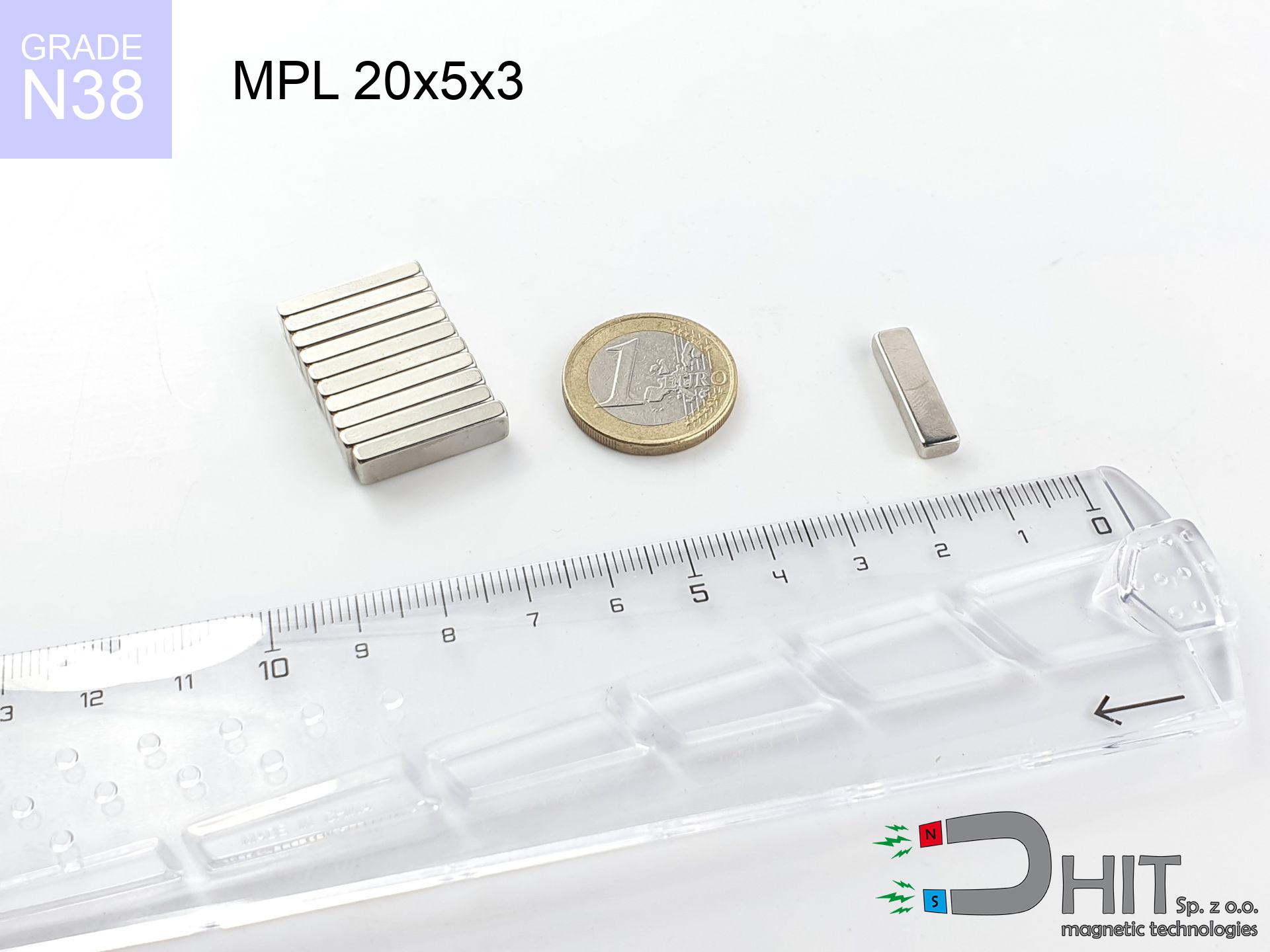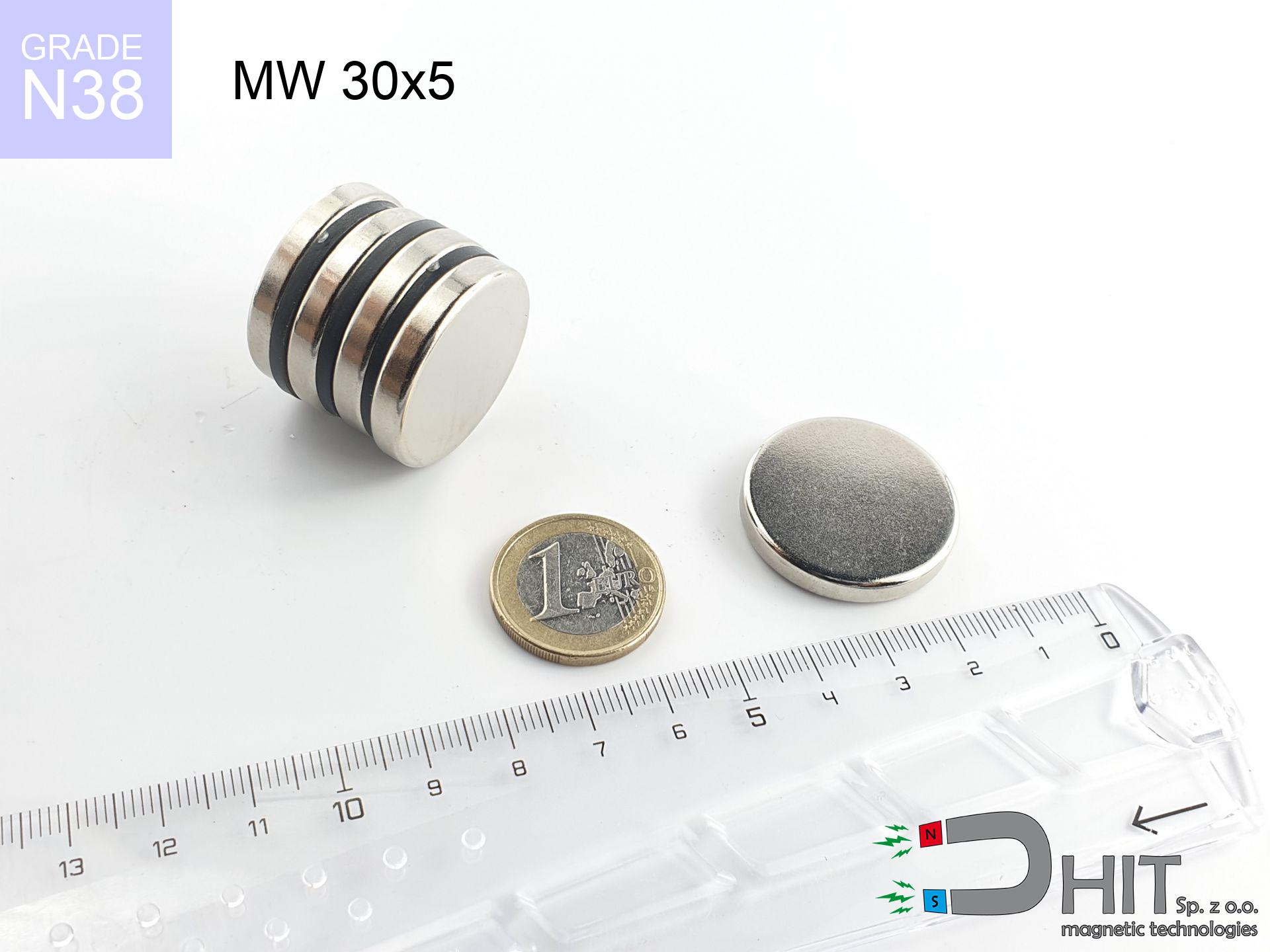SM 25x200 [2xM8] / N42 - magnetic separator
magnetic separator
Catalog no 130291
GTIN/EAN: 5906301812845
Diameter Ø
25 mm [±1 mm]
Height
200 mm [±1 mm]
Weight
760 g
Magnetic Flux
~ 6 500 Gauss [±5%]
541.20 ZŁ with VAT / pcs + price for transport
440.00 ZŁ net + 23% VAT / pcs
bulk discounts:
Need more?
Contact us by phone
+48 22 499 98 98
alternatively get in touch using
our online form
our website.
Force as well as form of magnetic components can be reviewed on our
force calculator.
Orders submitted before 14:00 will be dispatched today!
Product card - SM 25x200 [2xM8] / N42 - magnetic separator
Specification / characteristics - SM 25x200 [2xM8] / N42 - magnetic separator
| properties | values |
|---|---|
| Cat. no. | 130291 |
| GTIN/EAN | 5906301812845 |
| Production/Distribution | Dhit sp. z o.o. |
| Country of origin | Poland / China / Germany |
| Customs code | 85059029 |
| Diameter Ø | 25 mm [±1 mm] |
| Height | 200 mm [±1 mm] |
| Weight | 760 g |
| Material Type | Stainless steel AISI 304 / A2 |
| Magnetic Flux | ~ 6 500 Gauss [±5%] |
| Size/Mount Quantity | 2xM8 |
| Polarity | circumferential - 7 poles |
| Casing Tube Thickness | 1 mm |
| Manufacturing Tolerance | ±1 mm |
Magnetic properties of material N42
| properties | values | units |
|---|---|---|
| remenance Br [min. - max.] ? | 12.9-13.2 | kGs |
| remenance Br [min. - max.] ? | 1290-1320 | mT |
| coercivity bHc ? | 10.8-12.0 | kOe |
| coercivity bHc ? | 860-955 | kA/m |
| actual internal force iHc | ≥ 12 | kOe |
| actual internal force iHc | ≥ 955 | kA/m |
| energy density [min. - max.] ? | 40-42 | BH max MGOe |
| energy density [min. - max.] ? | 318-334 | BH max KJ/m |
| max. temperature ? | ≤ 80 | °C |
Physical properties of sintered neodymium magnets Nd2Fe14B at 20°C
| properties | values | units |
|---|---|---|
| Vickers hardness | ≥550 | Hv |
| Density | ≥7.4 | g/cm3 |
| Curie Temperature TC | 312 - 380 | °C |
| Curie Temperature TF | 593 - 716 | °F |
| Specific resistance | 150 | μΩ⋅cm |
| Bending strength | 250 | MPa |
| Compressive strength | 1000~1100 | MPa |
| Thermal expansion parallel (∥) to orientation (M) | (3-4) x 10-6 | °C-1 |
| Thermal expansion perpendicular (⊥) to orientation (M) | -(1-3) x 10-6 | °C-1 |
| Young's modulus | 1.7 x 104 | kg/mm² |
Table 1: Rod construction
SM 25x200 [2xM8] / N42
| Parameter | Value | Description / Unit |
|---|---|---|
| Diameter (Ø) | 25 | mm |
| Total length | 200 | mm (L) |
| Active length | 164 | mm |
| Section count | 7 | modules |
| Dead zone | 36 | mm (2x 18mm starter) |
| Weight (est.) | ~746 | g |
| Active area | 129 | cm² (Area) |
| Housing material | AISI 304 | 1.4301 (Inox) |
| Surface finish | Ra < 0.8 µm | Polished |
| Temp. class | 80°C | Standard (N) |
| Force loss (at max °C) | -12.8% | Reversible loss (physics) |
| Force (calculated) | 10.6 | kg (theor.) |
| Induction (surface) | ~6 500 | Gauss (Max) |
Chart 2: Field profile (7 sections)
Chart 3: Temperature performance
Chemical composition
| iron (Fe) | 64% – 68% |
| neodymium (Nd) | 29% – 32% |
| boron (B) | 1.1% – 1.2% |
| dysprosium (Dy) | 0.5% – 2.0% |
| coating (Ni-Cu-Ni) | < 0.05% |
Environmental data
| recyclability (EoL) | 100% |
| recycled raw materials | ~10% (pre-cons) |
| carbon footprint | low / zredukowany |
| waste code (EWC) | 16 02 16 |
View more products
Strengths as well as weaknesses of rare earth magnets.
Strengths
- They virtually do not lose strength, because even after 10 years the performance loss is only ~1% (in laboratory conditions),
- They feature excellent resistance to magnetic field loss due to external fields,
- By applying a lustrous layer of nickel, the element gains an aesthetic look,
- The surface of neodymium magnets generates a strong magnetic field – this is a distinguishing feature,
- Thanks to resistance to high temperature, they can operate (depending on the shape) even at temperatures up to 230°C and higher...
- Possibility of detailed shaping as well as adapting to specific conditions,
- Key role in innovative solutions – they are commonly used in data components, motor assemblies, medical equipment, also complex engineering applications.
- Compactness – despite small sizes they generate large force, making them ideal for precision applications
Weaknesses
- At strong impacts they can break, therefore we advise placing them in special holders. A metal housing provides additional protection against damage, as well as increases the magnet's durability.
- We warn that neodymium magnets can lose their strength at high temperatures. To prevent this, we suggest our specialized [AH] magnets, which work effectively even at 230°C.
- Magnets exposed to a humid environment can rust. Therefore during using outdoors, we advise using water-impermeable magnets made of rubber, plastic or other material resistant to moisture
- Due to limitations in realizing threads and complicated forms in magnets, we propose using a housing - magnetic mechanism.
- Potential hazard to health – tiny shards of magnets can be dangerous, when accidentally swallowed, which gains importance in the context of child safety. It is also worth noting that tiny parts of these products are able to be problematic in diagnostics medical after entering the body.
- High unit price – neodymium magnets cost more than other types of magnets (e.g. ferrite), which increases costs of application in large quantities
Holding force characteristics
Maximum lifting capacity of the magnet – what contributes to it?
- with the contact of a yoke made of special test steel, guaranteeing maximum field concentration
- whose thickness is min. 10 mm
- with an polished contact surface
- without any air gap between the magnet and steel
- under vertical force vector (90-degree angle)
- in neutral thermal conditions
Practical aspects of lifting capacity – factors
- Air gap (between the magnet and the metal), because even a tiny distance (e.g. 0.5 mm) can cause a decrease in lifting capacity by up to 50% (this also applies to paint, rust or dirt).
- Loading method – catalog parameter refers to pulling vertically. When applying parallel force, the magnet exhibits much less (often approx. 20-30% of maximum force).
- Steel thickness – insufficiently thick plate does not accept the full field, causing part of the power to be wasted into the air.
- Metal type – not every steel reacts the same. High carbon content worsen the attraction effect.
- Surface quality – the more even the surface, the better the adhesion and higher the lifting capacity. Unevenness creates an air distance.
- Thermal factor – high temperature reduces pulling force. Exceeding the limit temperature can permanently demagnetize the magnet.
Holding force was checked on a smooth steel plate of 20 mm thickness, when a perpendicular force was applied, whereas under attempts to slide the magnet the load capacity is reduced by as much as 5 times. Additionally, even a small distance between the magnet’s surface and the plate decreases the lifting capacity.
Safety rules for work with NdFeB magnets
Respect the power
Handle with care. Neodymium magnets attract from a distance and connect with huge force, often faster than you can move away.
Choking Hazard
Product intended for adults. Small elements pose a choking risk, causing serious injuries. Store out of reach of kids and pets.
Crushing force
Risk of injury: The attraction force is so great that it can cause hematomas, crushing, and broken bones. Use thick gloves.
Demagnetization risk
Do not overheat. NdFeB magnets are sensitive to heat. If you require operation above 80°C, look for special high-temperature series (H, SH, UH).
ICD Warning
Warning for patients: Strong magnetic fields affect electronics. Maintain minimum 30 cm distance or request help to handle the magnets.
Fire warning
Dust created during grinding of magnets is combustible. Do not drill into magnets unless you are an expert.
Risk of cracking
Despite metallic appearance, the material is delicate and not impact-resistant. Avoid impacts, as the magnet may shatter into hazardous fragments.
Allergy Warning
Medical facts indicate that nickel (standard magnet coating) is a common allergen. For allergy sufferers, avoid touching magnets with bare hands or opt for coated magnets.
Magnetic interference
Note: neodymium magnets generate a field that confuses precision electronics. Maintain a safe distance from your mobile, tablet, and navigation systems.
Cards and drives
Equipment safety: Neodymium magnets can ruin data carriers and sensitive devices (heart implants, medical aids, mechanical watches).

![Separation magnetic rod SM 25x200 [2xM8] / N42 Separation magnetic rod SM 25x200 [2xM8] / N42](https://cdn3.dhit.pl/graphics/banners/magnet.webp)
![SM 25x200 [2xM8] / N42 - magnetic separator](https://cdn3.dhit.pl/graphics/products/sm-25x200-2xm8-dos.jpg)
![SM 25x175 [2xM8] / N52 - magnetic separator SM 25x175 [2xM8] / N52 - magnetic separator](https://cdn3.dhit.pl/graphics/products/sm-25x175-2xm8-gif.jpg)
![HH 16x5.3 [M3] / N38 - through hole magnetic holder HH 16x5.3 [M3] / N38 - through hole magnetic holder](https://cdn3.dhit.pl/graphics/products/hh-16x5.3-m3-sud.jpg)



